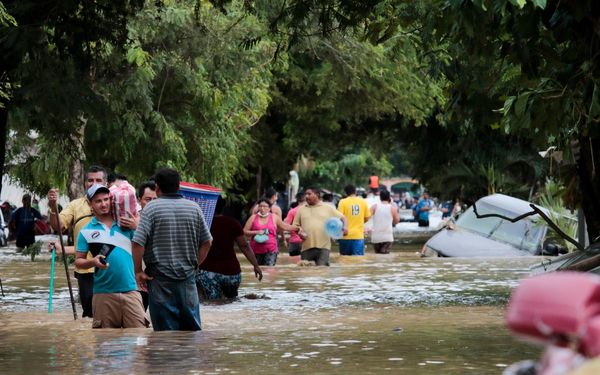
Trending
There’s a lot about the handling of Brittany Higgins’ rape allegation that’s been disheartening, but there’s one part that I’ve been mulling over that has broader implications for how we all use technology.
For months, leaks of Higgins’ text messages and documents have found their way into the hands of parts of the media. As Nine’s Lisa Visentin wrote in her excellent wrap of the saga: “The leaks and the reporting of them have attempted to reframe the rape allegation against Bruce Lehrmann as a political conspiracy, settle scores in the media and wound a minister.”
This edition of WebCam isn’t going to delve too deeply into the ethics of reporting on this. Instead it looks at this as an example of a tech-enabled phenomenon: the weaponisation of large amounts of leaked personal data to embarrass or discredit an individual. Another example that springs to mind is Hunter Biden’s laptop.
The defining characteristics of this phenomenon as I see it are:
- The non-consensual release of large amounts of private communication data like text messages, emails or recordings of conversations from an individual;
- At least some of the data published has limited or negligible public interest;
- The data is then picked through and distributed (typically by media but can be by individuals or organisations) to cast the victim in a poor light.
The end result is a constant drip-drip-drip of tidbits that can lead to weeks or months of critical attention with each new “revelation”. That’s why it appears to be most devastating and prevalent in situations where the victim is in an adversarial relationship with another figure — whether it be as part of a court case or in politics — because it skews coverage to create a largely negative perception.
Obviously not all leaks of personal communications are a form of abuse; in fact, they can be an important part of journalism! That even includes some of the information that has come out in these leaks, like the fact that Katy Gallagher seemingly misled Parliament.
The kind of abuse I’m describing here is distinctly different from this legitimate use: it’s about the scale (lots), substance (titillating but not newsworthy) and impact (personally harmful). It’s the difference between curating emails that show how Hunter Biden made multimillion-dollar deals off the back of his family name versus publishing 900 photos showing the president’s son, who has spoken publicly about his struggles with drug addiction, having intercourse with sex workers while using drugs. These kinds of leaks can be weaponised even if they include some legitimate information.
The weaponisation of private data works by exposing many intimate moments that each of us shares with friends, family and other contacts every single day. I don’t think it’s ridiculous to say that everyone reading this would probably be embarrassed if our private communications were suddenly made public, revealing every white lie, vent session and deliberation that we had intended would remain between us and our message’s recipient. The natural performance of how we interact with others — consider how differently you might respond to “How’s work?” depending on whether your boss or your partner asked — seems duplicitous when it’s decontextualised from the moment and context.
This is all made possible by technology. What used to be a conversation between two people that would soon disappear into the ether of their fading memories is now digitally preserved in our phones or on the cloud (and possibly leaked).
It makes sense for your work email to keep a record of every piece of correspondence. But what about your family group chat or your DMs with friends? Does the benefit of being able to search your messages outweigh the risks? Should retaining this information be the default option over something more ephemeral? Whether it’s because the companies that make these products have a business model that depends on retaining data or just because of design choice, the result is that each of us is participating in self-surveillance.
Most of us won’t be the victim of a leak on a scale like this, but it should make us pause and reflect on whether we’ve all considered the risks of the technology that we’ve adopted.
Bruce Lehrmann has always maintained his innocence.
Hyperlinks
Who’s behind the ‘creepy’ AI-generated TikTok ads targeting Australians? (Crikey)
Australians increasingly concerned about online privacy after high-profile cybersecurity breaches (Guardian Australia)
IAG used keystroke logging to investigate productivity of remote worker (IT News)
Former federal MP Andrew Laming hit with $20k fine over pre-election Facebook posts (The Courier-Mail)
Australians could get a national digital identity within a year. This is what that means for you (Nine)
TikTok starting up Australian technology lab following security risk concerns (ABC News)
Twitter/X defends restoring account that shared child abuse material (Guardian Australia)
News Corp staff blindsided by company’s use of AI to produce articles for ‘years’ (Crikey)
Content Corner
Kilcoy is a little country town in regional Queensland that trended on TikTok over the weekend. The reason was that last weekend, the town’s population of 1898 drastically increased as thousands of people came to the Kilcoy Rodeo. People drive for hours from all around to compete in or watch the competition. For a lot of young people in regional Australia, rodeos serve a similar function to music festivals like Splendour in the Grass. There’s camping, drinking and a lot of, um, socialising.

As I was checking out the #Kilcoy hashtag, I noticed how TikTok had served a purpose other than as a record of the weekend’s festivities. The videos became impromptu online spaces that combined messaging, marketplaces, dating apps and other services.

People made videos saying they were going to the event. In those videos’ comment sections, other TikTok users chimed in to say they were going too. Other commenters tried to buy and sell tickets to the sold-out event. TikTok videos made during the event invited their audience to come meet them at parts of the event for a drink. When people posted montages of the weekend, people who saw themselves in the background tagged themselves or sought out people who they had met but hadn’t grabbed their contact details.
Even at the dusty Kilcoy Rodeo, tech platforms are changing the way we connect.
That’s it for WebCam this week! I’ll be back two Thursdays from now.
I must say, I really loved hearing from a lot of you after the last edition. I’d like to extend an invitation again to get in touch if you have anything to talk about (tips, leaks, even just for a chin-wag). Here are a few ways. In the meantime, you can find more of my writing here.
Bye!







